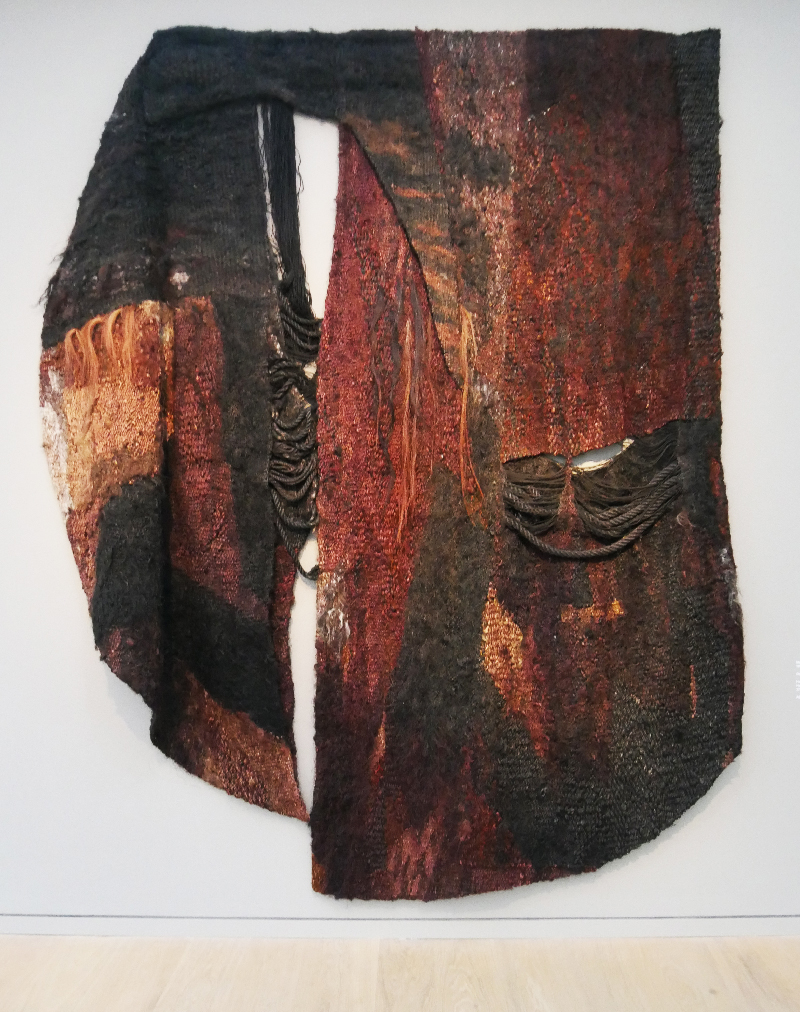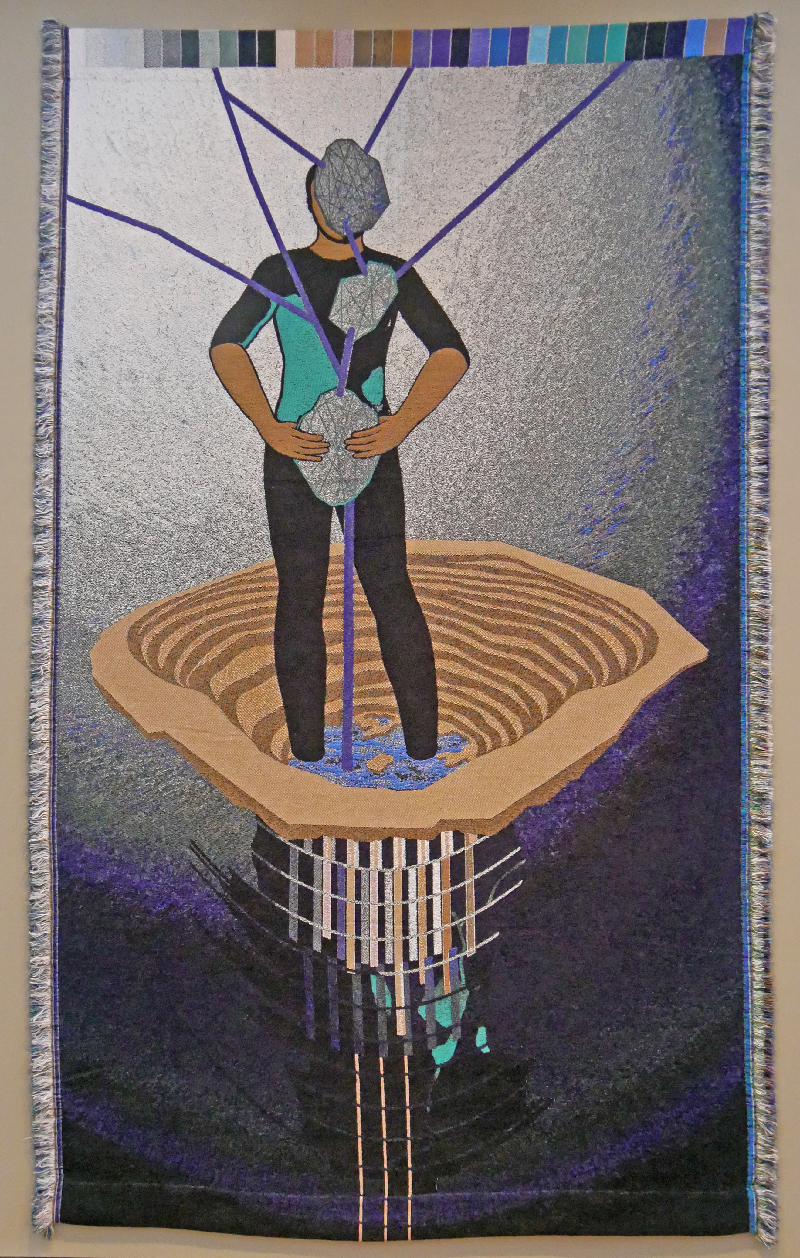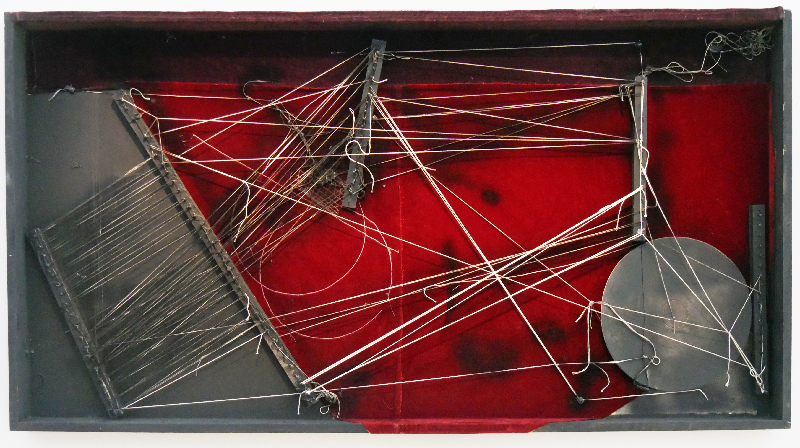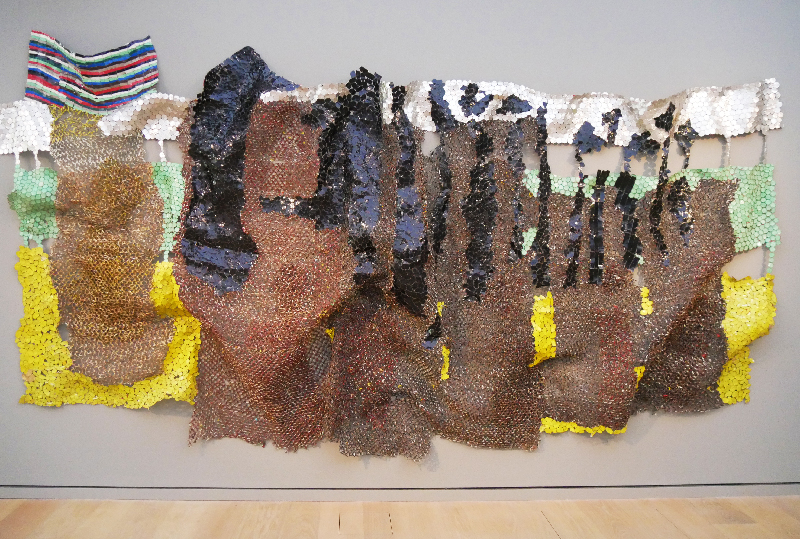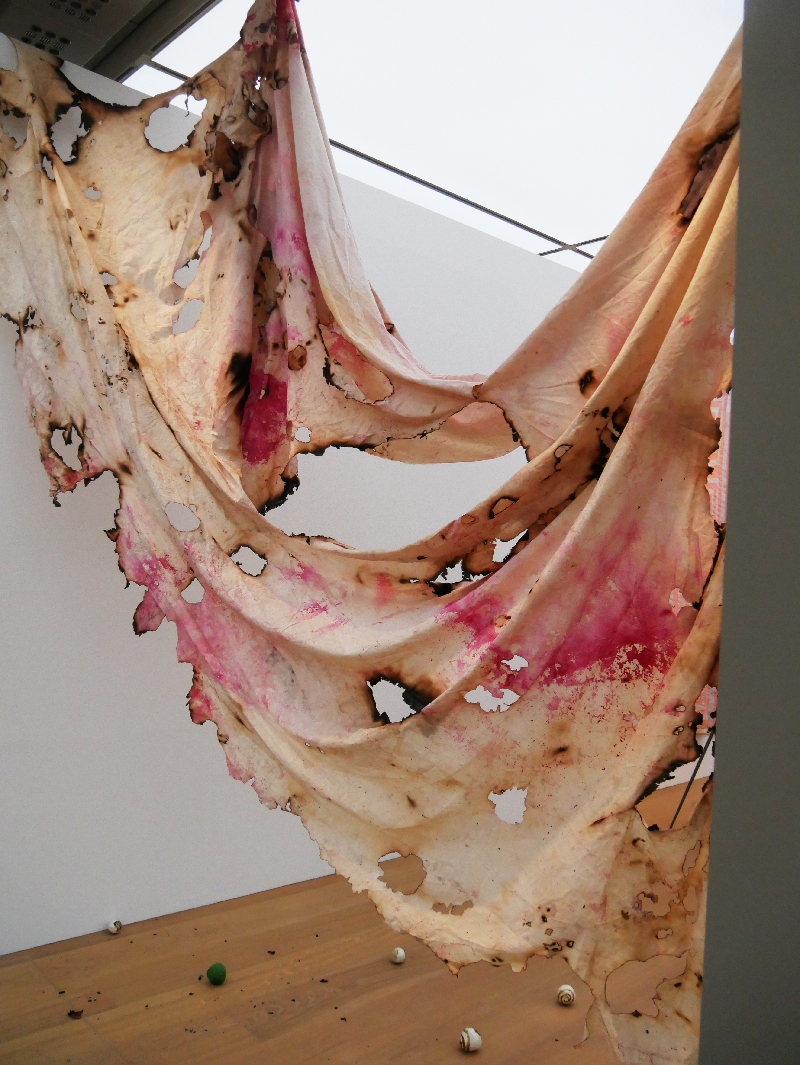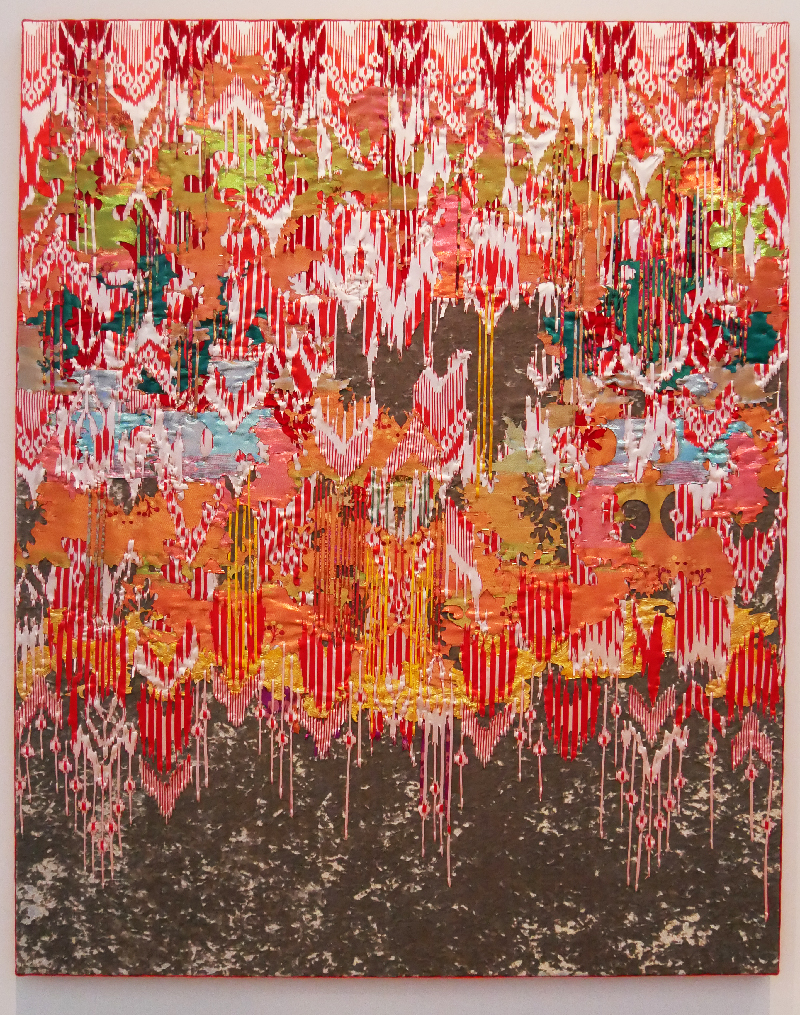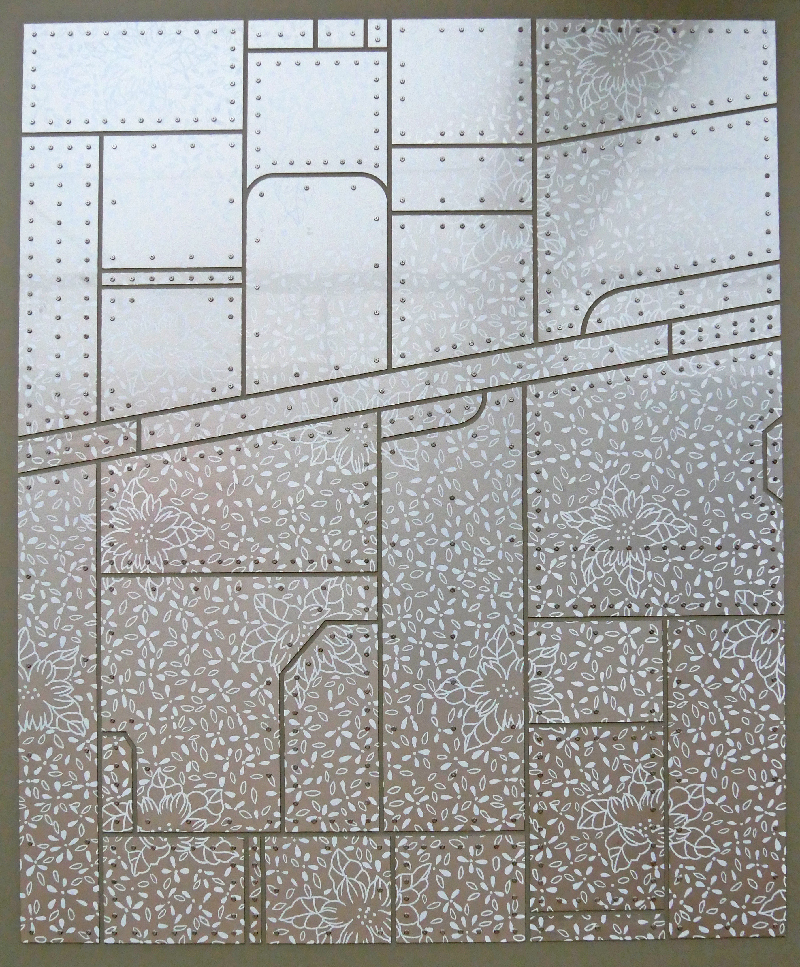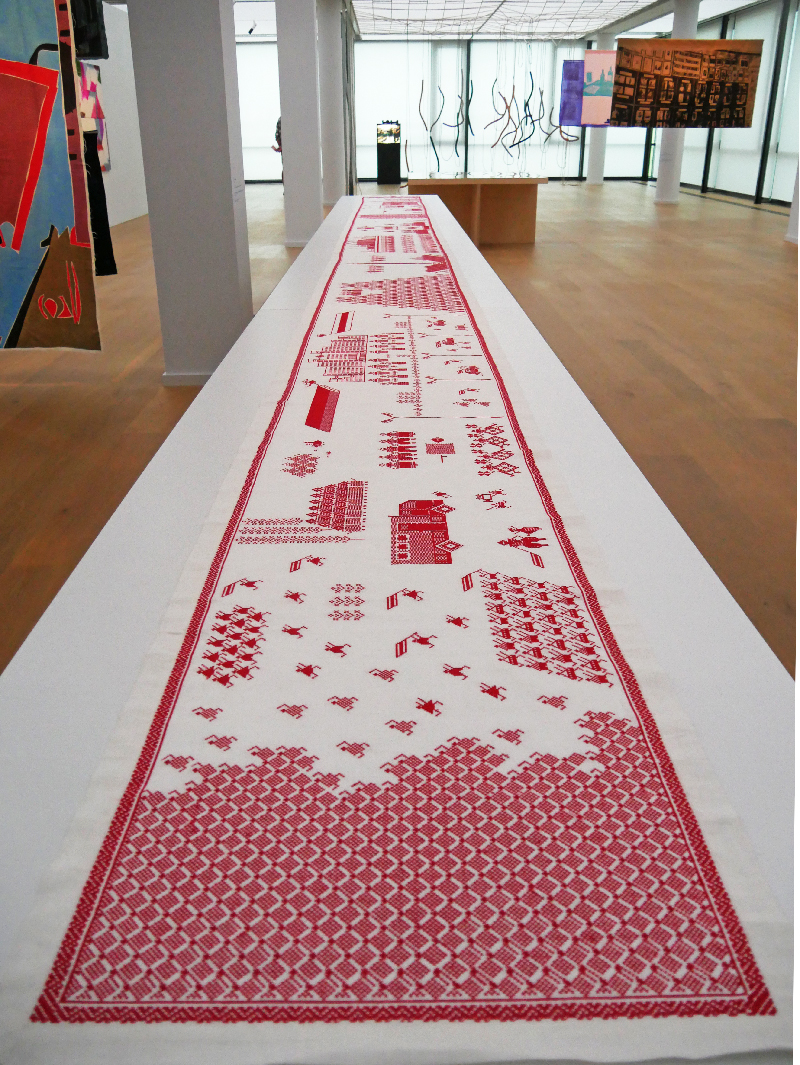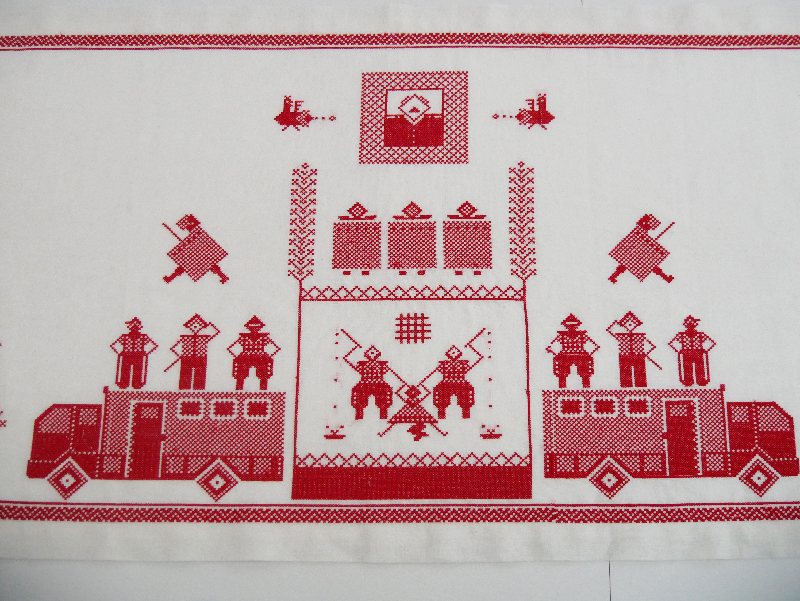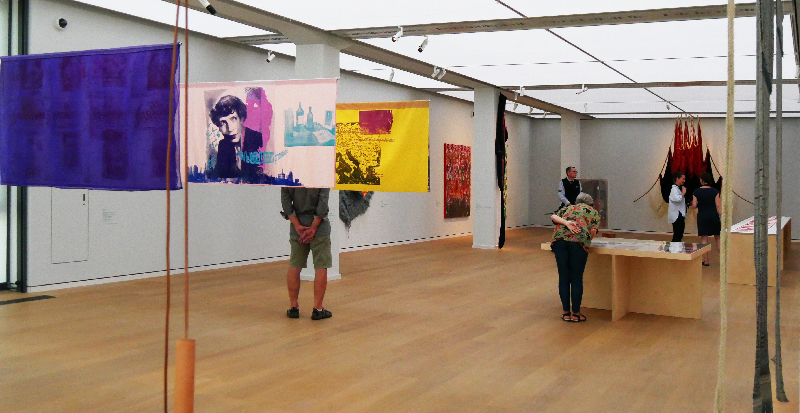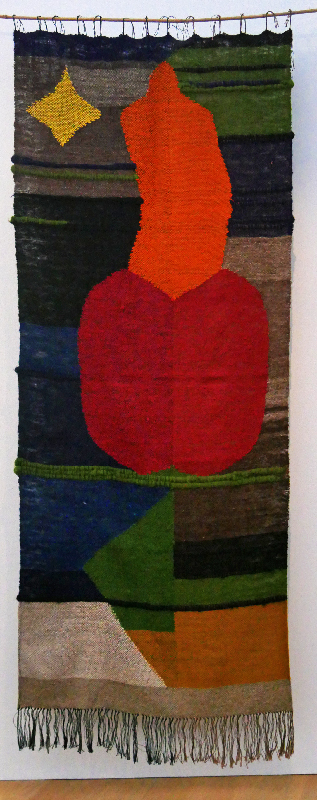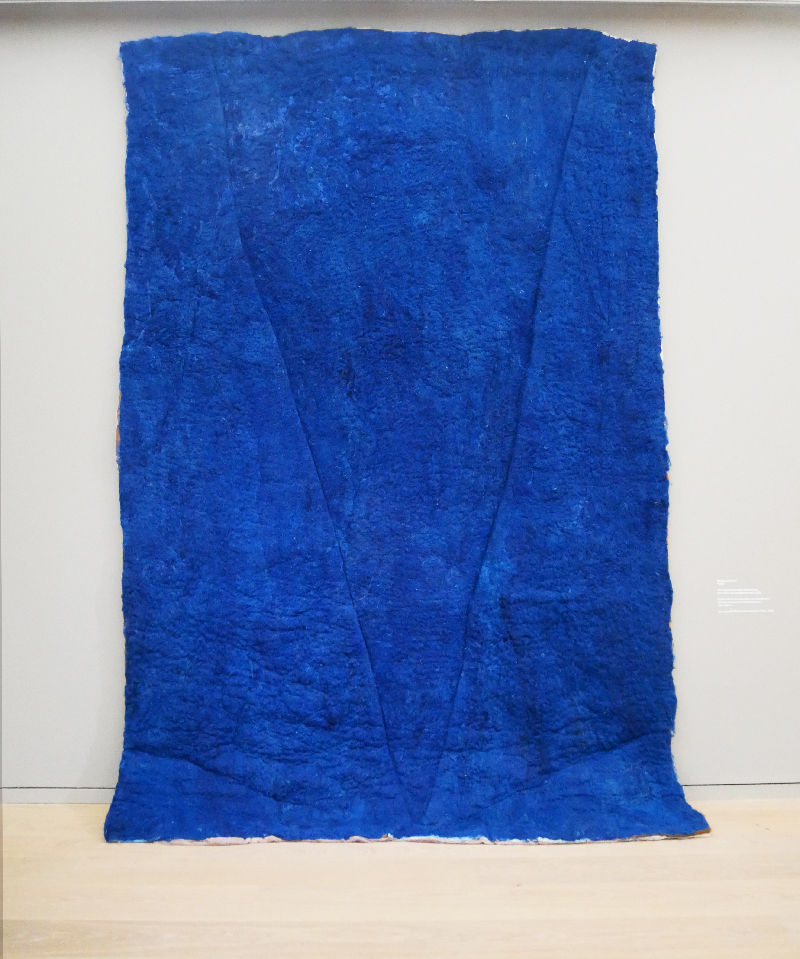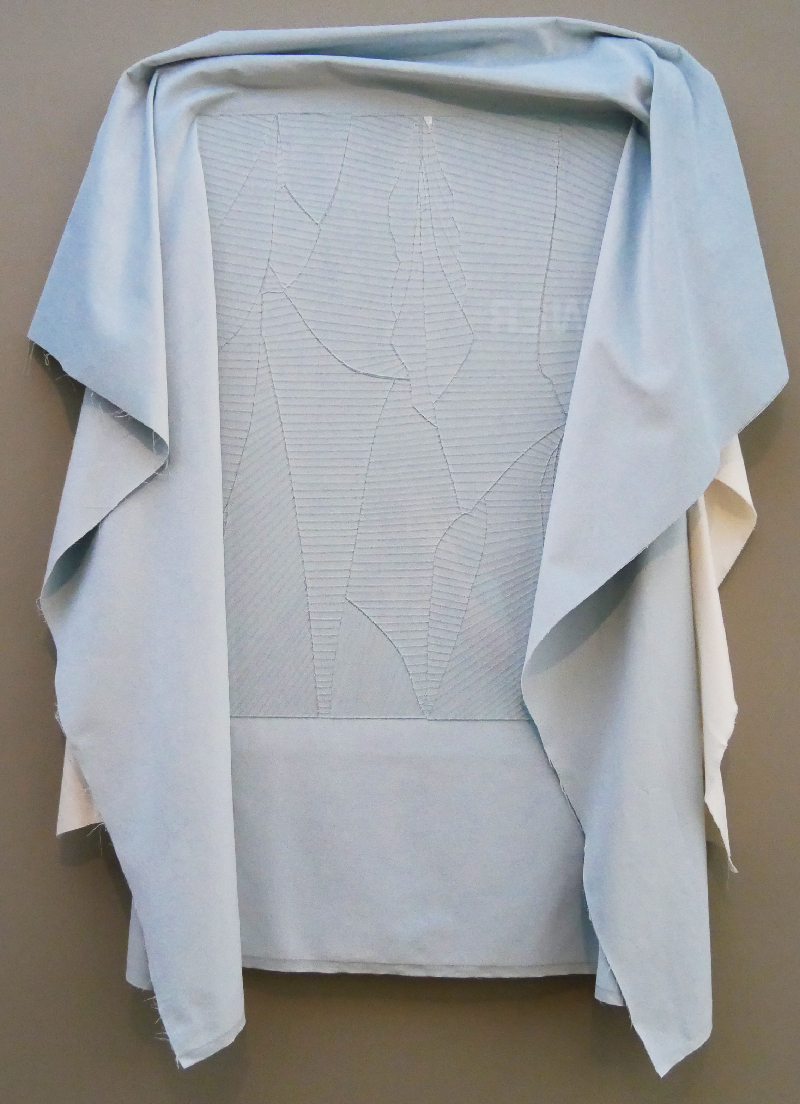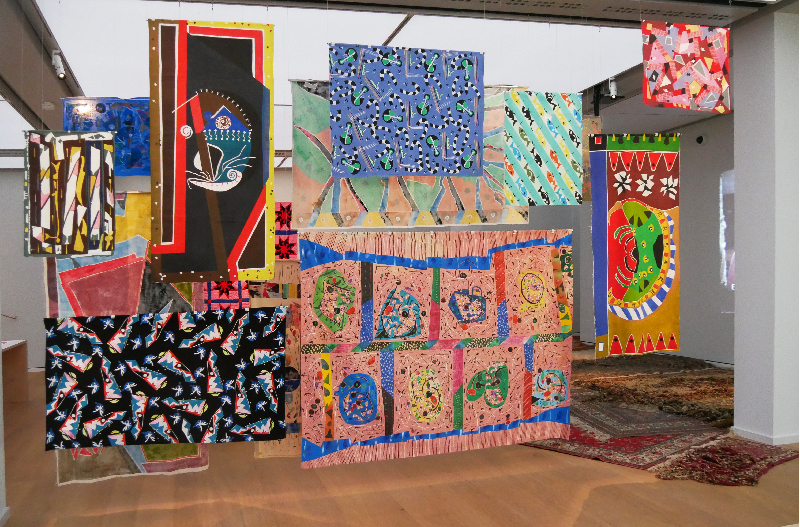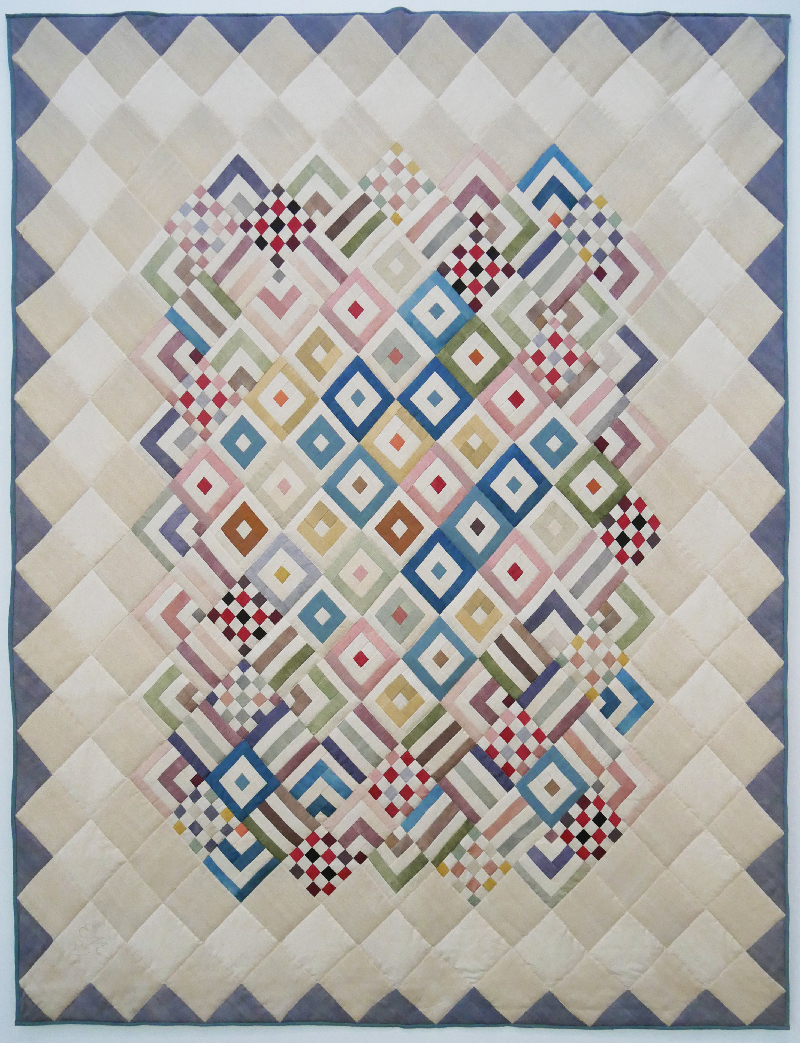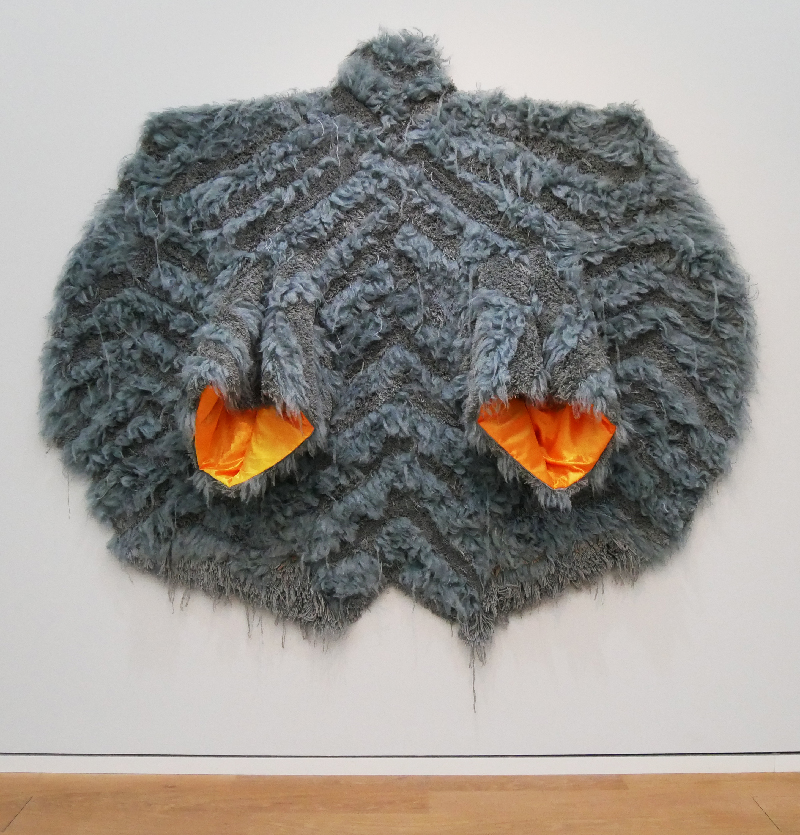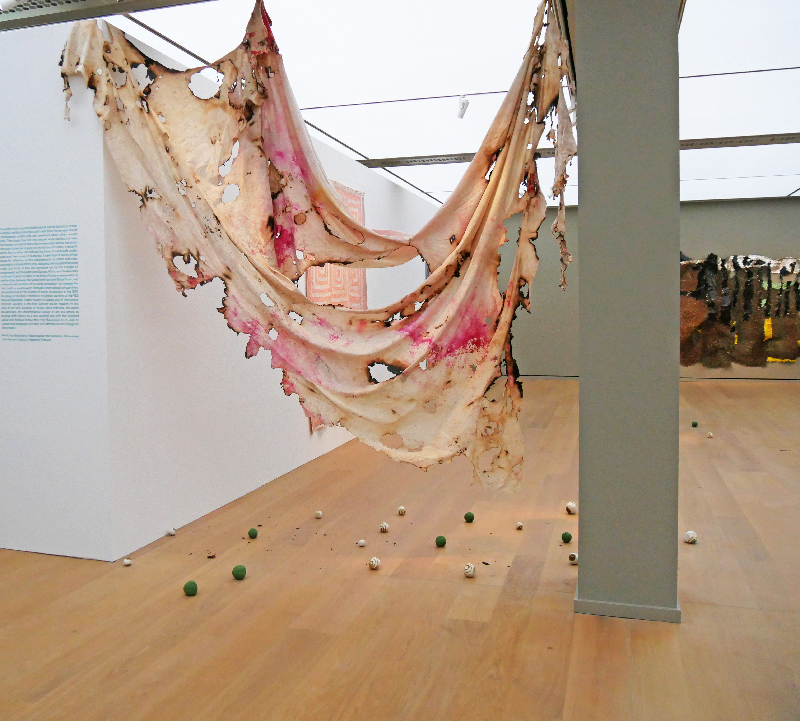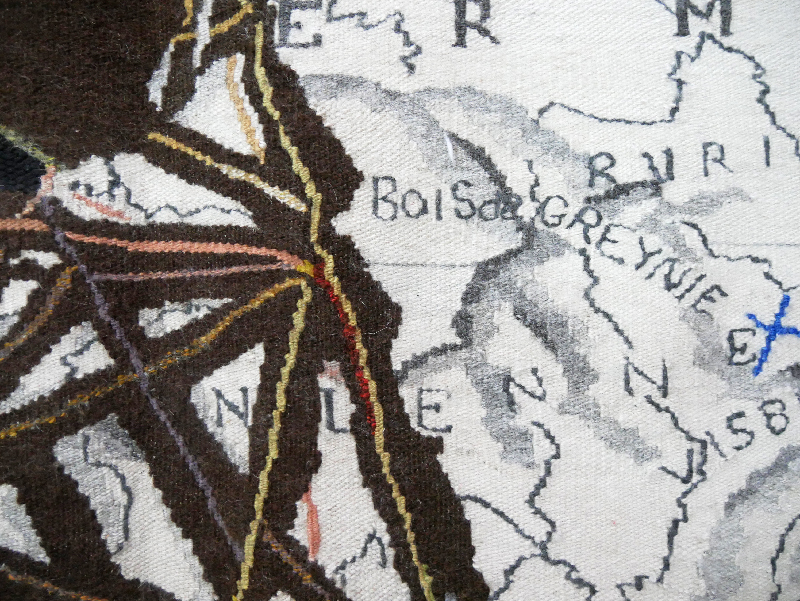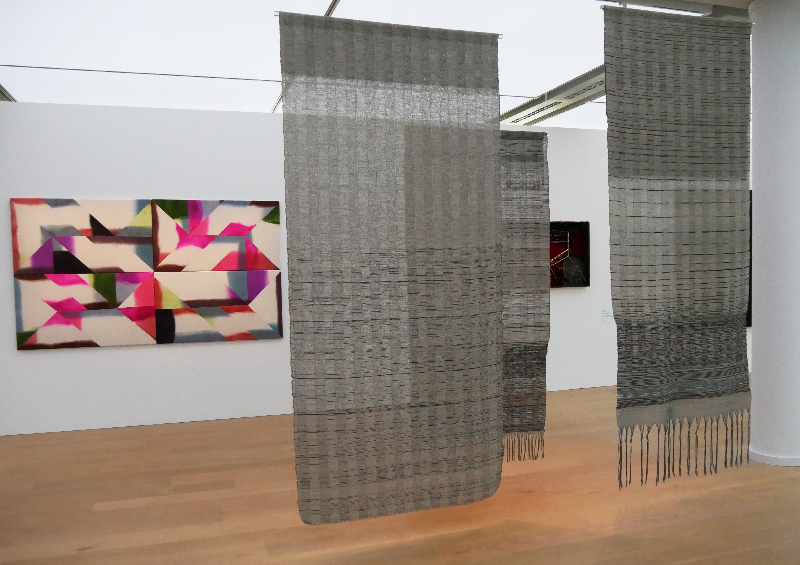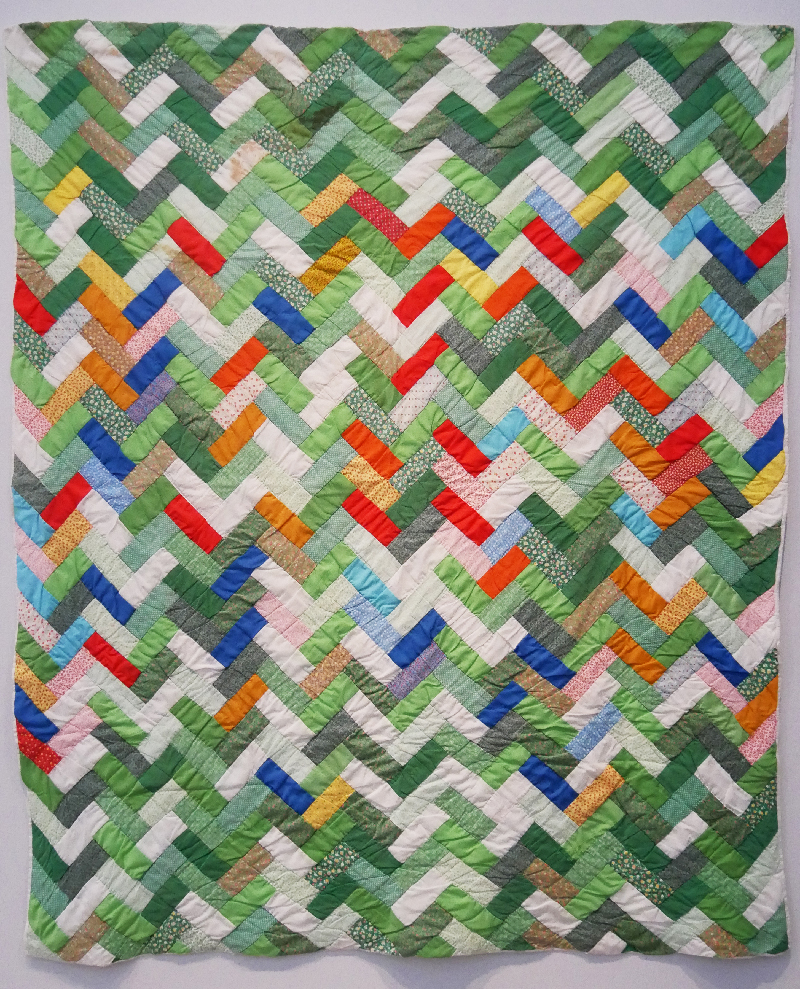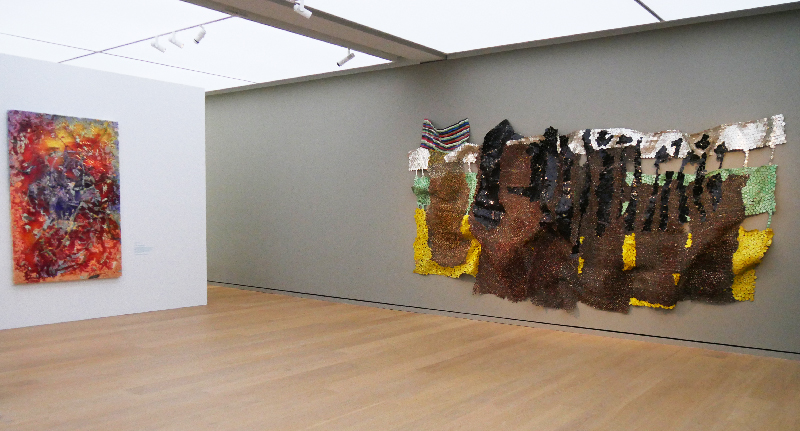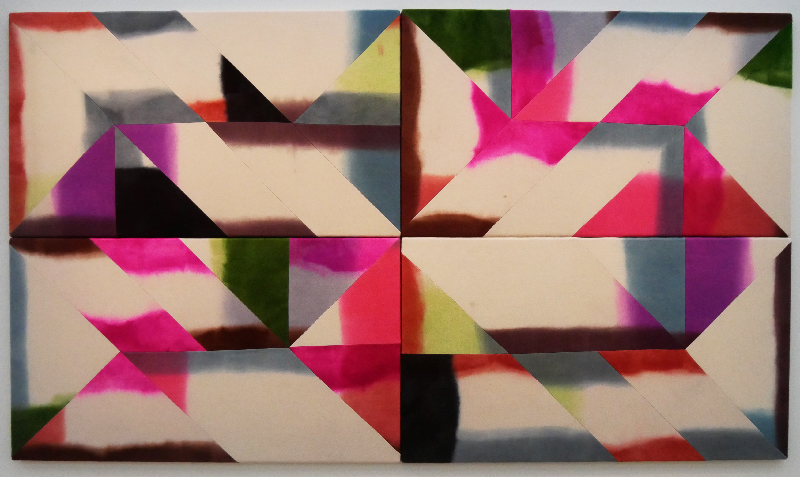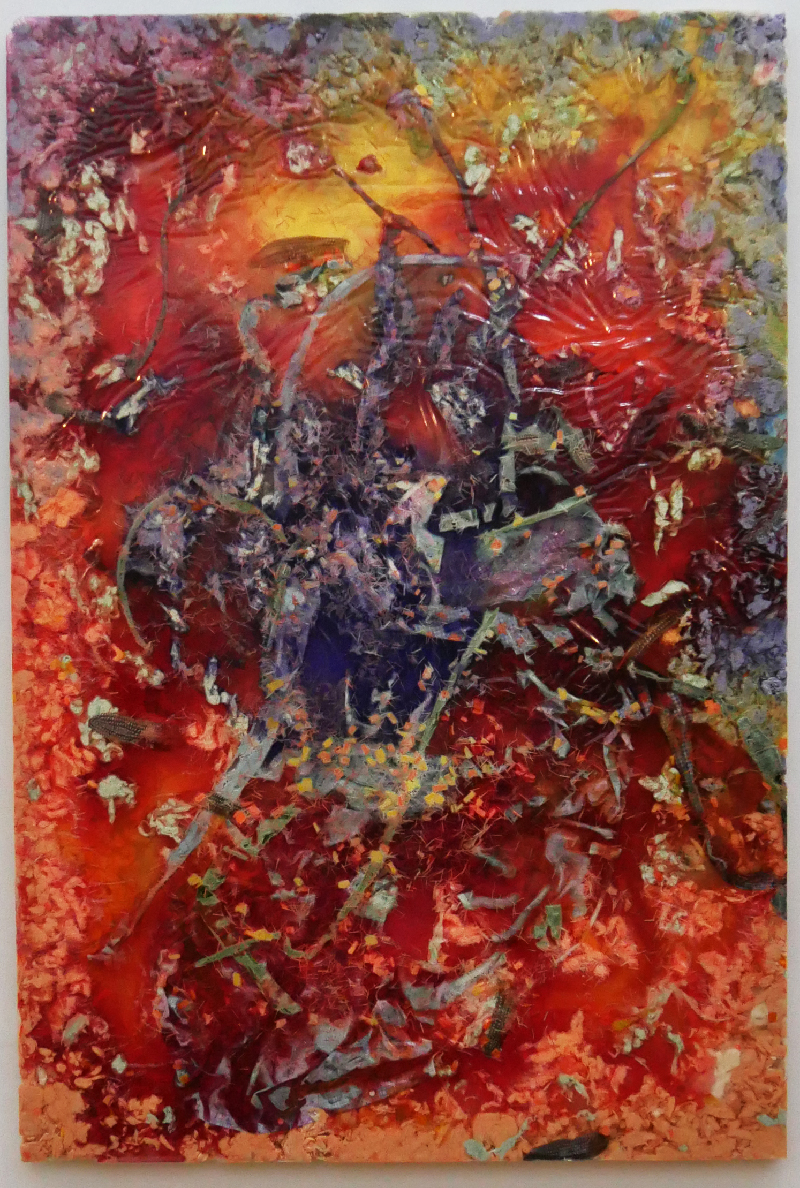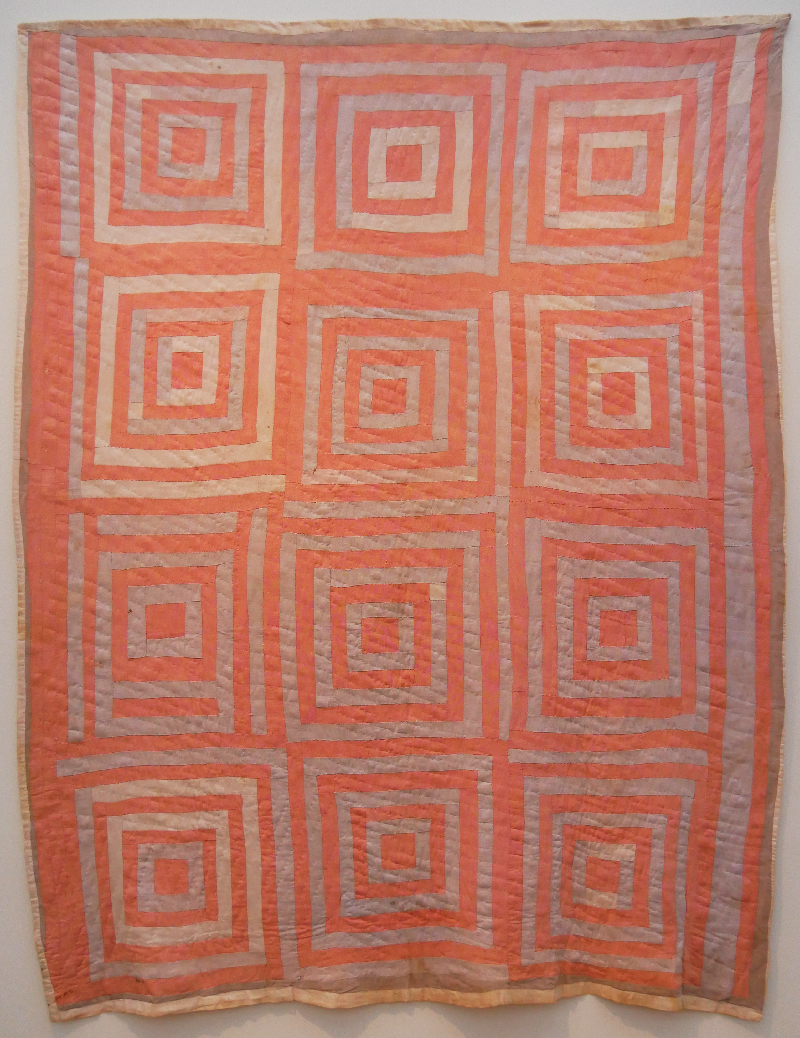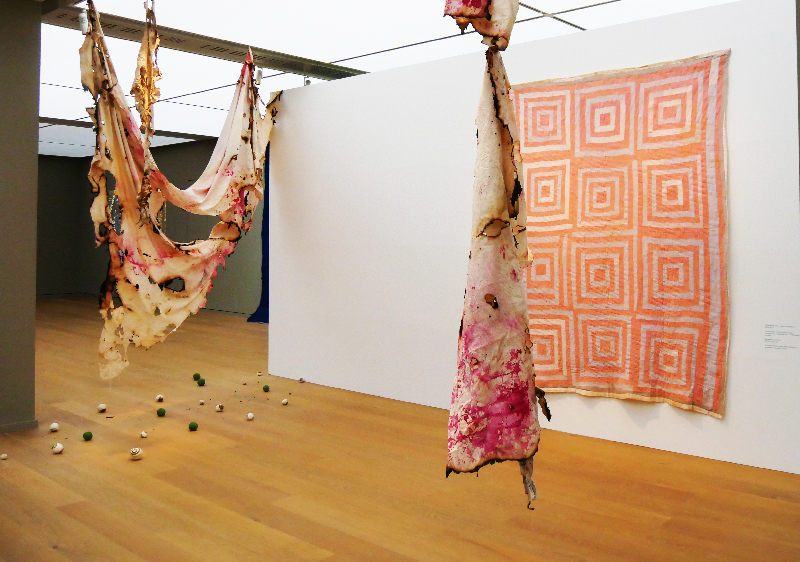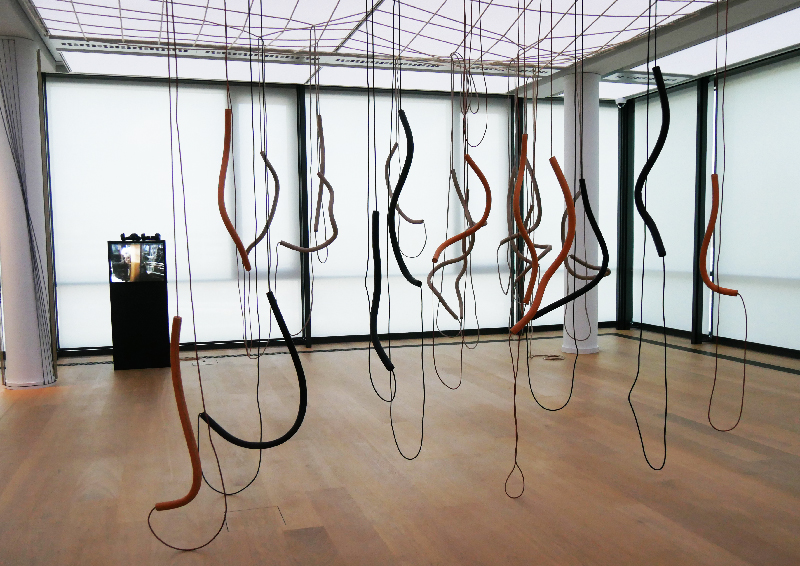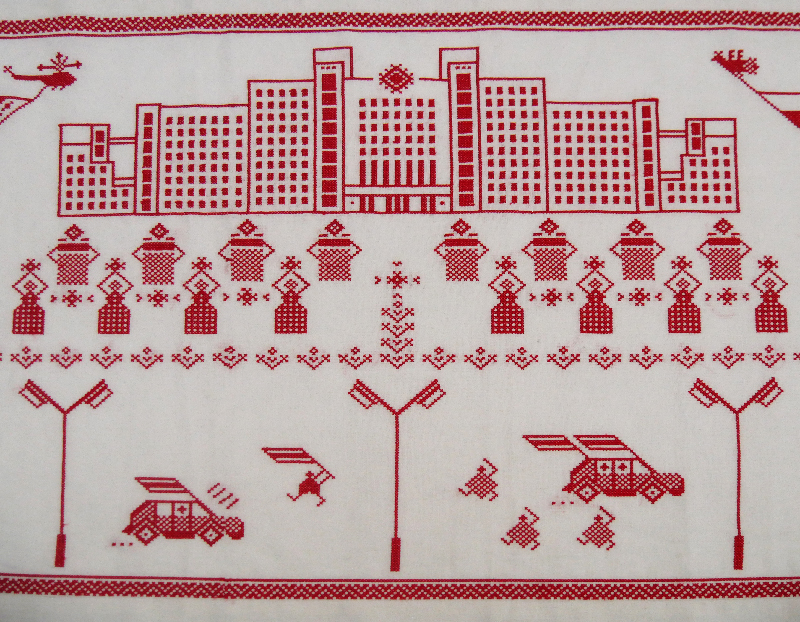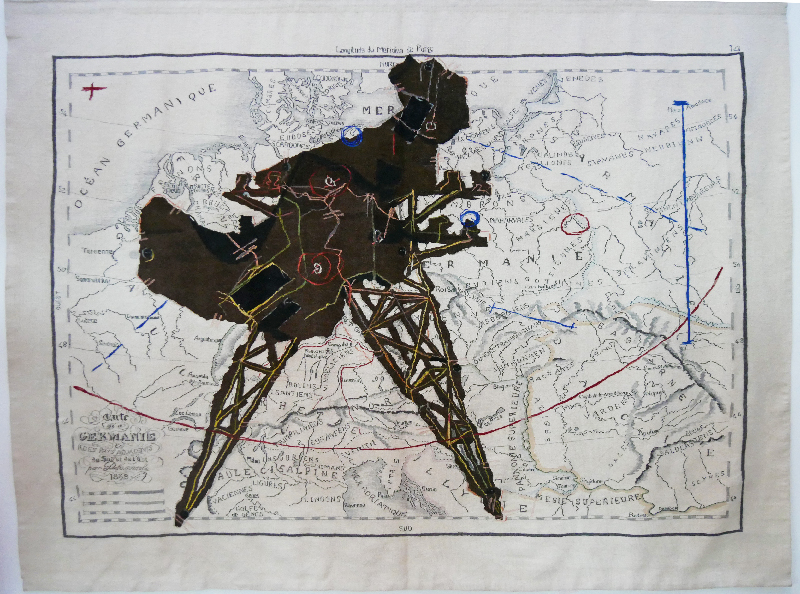
Soft Power- an exhibition from 16.3 to 11.8.2014 at Das Minsk Kunsthaus in Potsdam
Again a textile art exhibition that shows how textile art is handled by organizers having never been involved with textile art, but since everybody likes it so much, they now want to have some great textile art exhibition. That was the case with the „Kunst-Stoff“ exhibition in Emden and now again with „Soft Power“ in Das Minsk, Berlin. The catalogue tells how this exhibition started:
„It was during a tour together through an exhibition of Dutch painting that Stefanie Plattner, the Hasso Plattner Foundation board member responsible for Das Minsk, was struck by the tapestries in the background of many of the works . Soon the idea was born to create a contemporary exhibition that focuses on what often remains in the background in these paintings, namely textile art“ writes Paola Malavassi, founding director of Das Minsk, in her foreword.
She goes on telling that there were two starting points, first a tapestry from William Kentridge (a work from the Hasso Plattner Collection) and secondly the work of Malgorzata Mirga-Tas that impressed her at the 2022 Venice Biennale. As central themes she sees that these two artists „address complex historical, social, and geopolitical structures“.
From a textile point of view, these artists are not the easiest. Kentridge is a graphic artist who’s work does not reach the visitor easily, it is necessary to read his ideas first in order to get the point. Mirga-Tas work on the other hand was very easy to take in, her success at the Venice Biennial was due to the whole room transformed in one large textile story about the life and culture of her people, the Roma. Just one or two smaller works are not that impressive
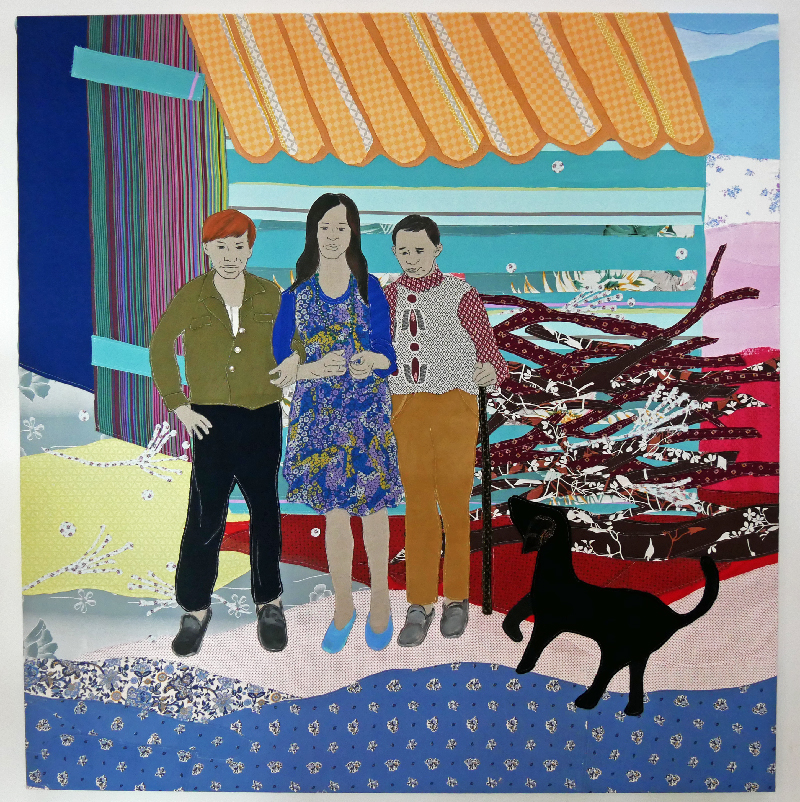
The curator, Daniel Milnes, did not have an easy task. But he made it all the more difficult in charging the exhibition with even more ambitions:“The exhibition understands textiles not only as handcrafted or industrially manufactured objects, but also as part of systems. This includes the production and trade networks that move textiles and people across the globe, as well as the stories, cartographies, and cosmologies that unfold around them” (text from the website of the exhibition).
The result was that I walked through the exhibition, in vain trying to find a red thread bringing the very diverse works together.
The introduction said that the exhibition was divided into three chapters, “Invisible Hands”, showing the conditions of production of textiles and their raw materials, “Disrupting Patterns” demonstrating how textiles can be used to challenge social norms and the political status quo, and finally “Ancestral Treads” showing how textiles can be used to remember our ancestors. Historic and contemporary works are referring to past traditions still taking effect today. These chapters were not shown together, so that was not very helpful, but reading the catalogue helped to understand the choices better.
From the around 30 artists there were 17 unknown to me, which does not happen often. Artists I liked were Magdalena Abakanowicz, Otobong Nkanga, Maria Lai, El Anatsui, Manuel Mathieu, Gulnur Mukazhanova, Sung Tieu and Rufina Bazlova. The last four of them were new to me, so I am grateful to be able to have seen these works! That maybe the better way to view this exhibition, just enjoy what you see and do not wonder why these works were chosen instead of others.
Did this exhibition help to make textile art more visible? It certainly did, even though I found it confusing, there was space enough for every work and I heard a good resonance from visitors, who were happy to see a whole exhibition devoted to textile art. Just a pity that, in my view, the organizers had wanted to much and overloaded the exhibition with political power relations and intellectual reasoning.
In textiles there always is someone who has put such questions earlier and more convincing: In 1984 Roszika Parker wrote “The Subversive Stitch- embroidery and the making of the feminine”, unraveling the history of embroidery from medieval times until today. This publication is valid even today and often used by writers on textiles.
As I heard about this exhibition rather late, I have seen it during the final week. Therefor I will try to show as many works as possible for all those who cannot see it any more.
